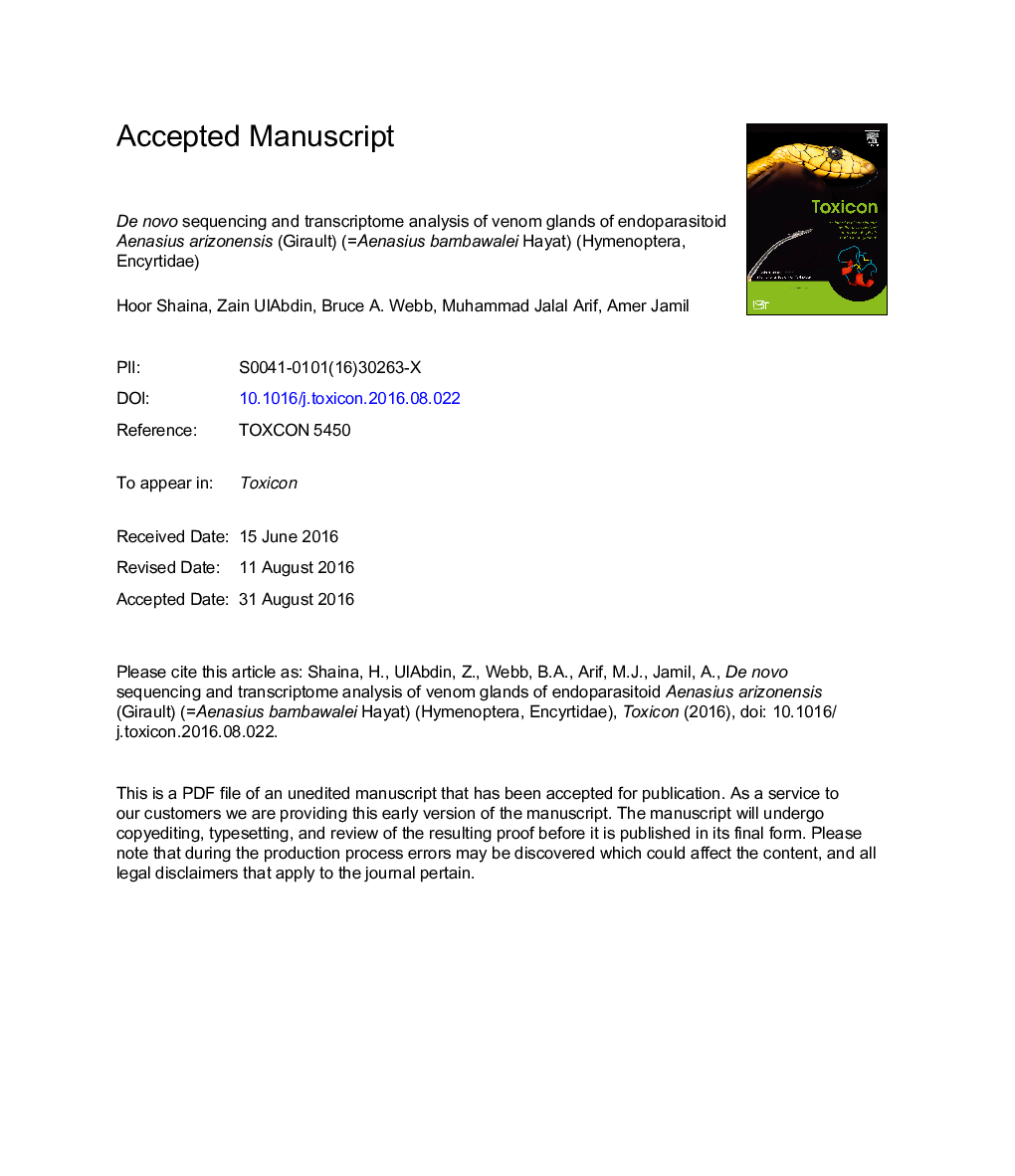| Article ID | Journal | Published Year | Pages | File Type |
|---|---|---|---|---|
| 8395015 | Toxicon | 2016 | 33 Pages |
Abstract
Aenasius bambawalei Hayat (Encyrtidae: Hymenoptera) has been synonymized with Aenasius arizonensis (Girault) is a small, newly discovered endoparasitoid of the cotton mealybug Phenacoccuss solenopsis Tinsley (Pseudococcidae: Hemiptera), which completes its life cycle inside the body of its host and it is a potential insect control tool. Despite the acquired knowledge regarding host-parasitoid interaction, little information is available on the factors of parasitoid origin able to modulate mealybug physiology. The components of A. arizonensis venom have not been well studied but venom from other parasitoids and wasps contain biologically active proteins that have potential applications in pest management or may be of medicinal importance. To provide an insight into the transcripts expressed in the venom gland of A. arizonensis, a transcriptomic database was developed utilizing high throughput RNA sequencing approaches to analyze the genes expressed in venom glands of this endoparasitic wasp. The resulting A. arizonensis RNA sequences were assembled de-novo with contigs then blasted against the NCBI non-redundant sequence database. Contigs which matched database sequences were mostly homologous to genes from hymenopteran parasitoids such as Nasonia vitripennis, Copidosoma floridanum, Fopius arsenus and Pteromalas puparium. Further analysis of the A. arizonensis database was then performed which focused on selected genes encoding proteins potentially involved in host developmental arrest, disrupting the host immune system, host paralysis, and transcripts that support these functions. Sequenced mRNAS predicted to encode full length ORFs of Calreticulin, Serine Protease Precursor and Arginine kinase proteins were identified and the tissue specific expression of these putative venom genes was analyzed by RT-PCR. In addition, results also demonstrate that de novo transcriptome assembly allows useful venom gene expression analysis in a species lacking a genome sequence database and may provide useful information for devising control tools for insect pests and other applications.
Keywords
Related Topics
Life Sciences
Biochemistry, Genetics and Molecular Biology
Biochemistry, Genetics and Molecular Biology (General)
Authors
Hoor Shaina, Zain UlAbdin, Bruce A. Webb, Muhammad Jalal Arif, Amer Jamil,
